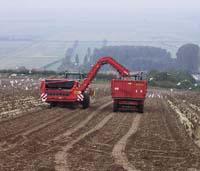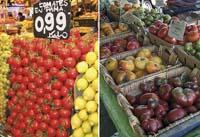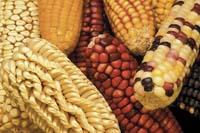Relics of the gardens

Not all carrots are oranges. Furthermore, the initial carrots were not oranges. It is believed that the Egyptians had purple carrots. In the tenth century, the Romans had purple and white. And historians say it. The century were white, yellow, greenish, red, purple, and black. But never oranges.
XVI. Until the twentieth century there was no orange carrot. The merit is from Holland. This carrot started from a light and, by hybridization, formed orange carrots. It was the time of Gilen de Orange and soon became a national product. The Dutch became the world's leading carrot producers. But not only that; the Dutch carrots, besides being oranges, were sweeter and gradually replaced the carrots of other colors. Today, for most people, there is no other.
Similar stories have occurred with many other vegetables: few varieties have ruled out thousands more. However, in many parts of the world, farmers who have preserved their seeds year after year have preserved some of these ancient varieties. In English they are called heirloom. They are relics of the orchards. And among some small producers, in recent years the tendency to return to these vegetables produced by the ancestors is growing.
For fertility
The orange carrots created by the Dutch can have better flavor than the most bitter previous varieties. But in most cases it has not been that reason that a few varieties have prevailed over others. On the contrary, it has been other commercial reasons that have motivated this fact. The big producers look for certain characteristics in the vegetables, especially fertility and uniformity, besides being suitable for collection, transport and conservation with machinery, etc.

Thus, there are few varieties selected by large producers. These varieties acquire such importance in the market that the rest are very marginalized. And in the end, for small producers, the seeds or plants available are of those varieties.
However, many times the varieties suitable for large producers are not the best option for those who want to make a vegetable garden at home. On the one hand, because the conditions of industrial cultivation are not the same. For example, tomatoes produced in Almeria are not the most suitable for growing up in the north of Euskal Herria. On the other hand, the small producer can give more importance to other characteristics such as taste, diversity, etc. that to fertility and uniformity.
Outside the market
Thus, many varieties that have not been commercially successful can be very interesting for agriculture of another level. For this reason, the interest in the heirloom is increasing, especially among those who make garden for home or for street markets.
To give the heirloom category to a variety of vegetables it is necessary, on the one hand, that it is not a "hybrid" (hybrid F1, see chart) and, on the other hand, that the genetics is sufficiently stabilized to ensure that from generation to generation the same variety is obtained. In this way it will be possible to continue conserving seeds every year. This does not happen with many commercial varieties. And the horticulturist is obliged to buy every year new seeds or plants.

On the other hand, a variety must have an antiquity or a history to have relic. Many plant relics are between 100 and 150 years old. But there are also treasures of centuries.
Some are not as fertile as commercial varieties, but perhaps they are much more tasty, or better adapted to the conditions of a given place. On the other hand, many gardeners have realized that their orchard tomatoes do not have to be red and round, but they can be of many shapes, colors, sizes and flavors. Or they simply want to continue producing the vegetables their grandparents produced.
Thus, more and more associations and institutions have begun to recover, maintain and exchange varieties that have been marginalized. They create seed banks to store seeds of the largest number of varieties safely. But many frozen seeds are not kept well for a long time. Peas, for example, cannot be maintained for more than 30 years. Therefore, it is also important to distribute the seeds to farmers so that they can seed and produce new seeds.
For the biodiversity
The conservation of seeds and the production of this type of varieties of vegetables favor the agricultural biodiversity. In fact, the predominance of commercial varieties is causing an important loss of diversity. According to FAO, in Europe, XX. At the beginning of the 20th century, 70% of the varieties of vegetables and fruit that were produced have already been lost, while in Asia 90% of the rice varieties have disappeared.

And not only varieties, but humans have used more than 10,000 species to feed themselves, and today we only use 150. In addition, 12 of them constitute 80% of our food, while only four are composed of rice, wheat, corn and potatoes.
The international Slow food movement has also highlighted the danger of extinction of certain foods in this list of 750 products from around the world. Among them is the tomato 'Aritxabaltako moskorra'. In few hamlets of Gipuzkoa is the tomato produced and maintained year after year, juicy and tasty, of few seeds and dark red almost garnet.
Have you ever tried 'Aritxabaltako moskorrik'? And before Columbus arrived they produced tomato purines? Or a white, yellow, red, or purple carrot? If you didn't know that, now you know they are there, you have to look for them!






